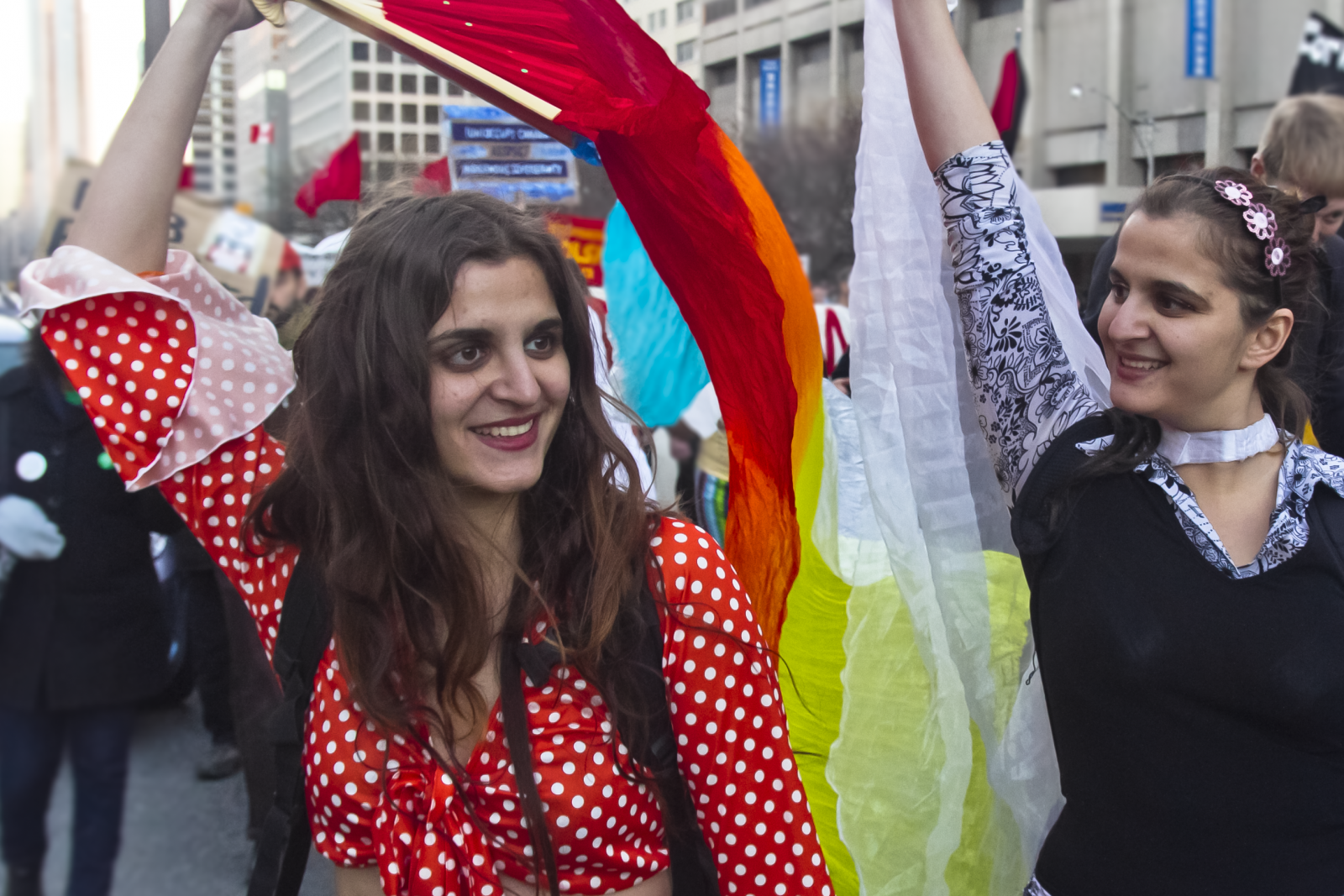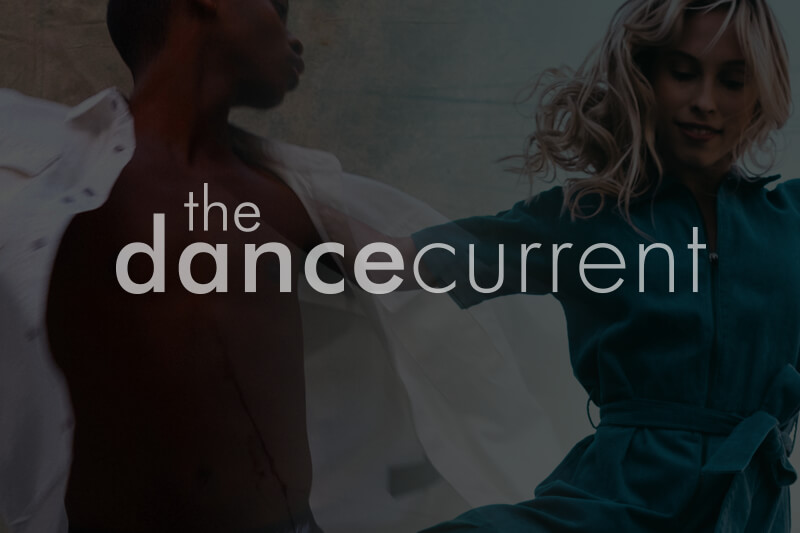Writer MJ Thompson invited participants from diverse Occupy encampments to share their experiences and pictures for a feature story in the May/June edition of The Dance Current. Together with Thompson’s essay on the meanings contained within the now suppressed yet still iconic Occupy poster with its ballerina poised atop a raging bull, this “scrapbook” explores a new way of looking at dissent.
Tell us your own story either on Facebook or by email.
On September 17th, 2011, the Occupy movement began in Liberty Square in Lower Manhattan, in the heart of New York’s financial district. People of all walks, empowered by social networking and mobilized by big bank corruption and the 2008 recession that continues to devastate millions, pitched tents and camped out in a symbolic reclamation of public space. Using an astonishing array of progressive strategies—modeling participatory democracy in general assembly meetings; providing basic services such as food, medical and legal services, and education; and speaking via an abundance of aesthetic and theatrical means—the movement stands against toxic policies that favour banks and corporations over ordinary people. In spite of different emphasis and origins, protesters united around the slogan “We are the 99 %,” which refers to the economic disparity between the wealthiest 1% of society—who earn nearly 25 per cent of United States income—and the rest of the population. By mid-October last fall, OWS had changed the terms of public debate in the United States and spread to cities and countries around the world.
Molly Johnson, 30
Independent Dance Artist
Participated in Occupy Wall Street
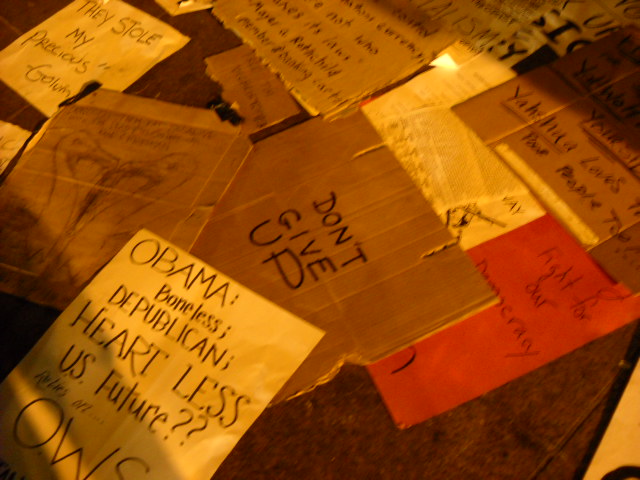
“I visited Occupy Wall Street several times over the course of a two week trip to New York in October 2011. It was an addictive place to be. It felt wrong not to be there all the time. I found I was torn between giving myself over entirely to the movement and fulfilling my actual reasons for being in the city: gaga classes, a wedding, eating my way through the city. I danced to the relentless beat of the drum circle – relentless till, in the interest of all involved, they were relegated to playing a max of two hours a day. I handed out fliers and the “Occupy Wall Street Journal” to an incredibly mixed, incredibly receptive populace. In the wake of an unexpected downpour, I shared my umbrella with a young guy who had just arrived from Occupy Philadelphia, duffle bag still in hand. Forget the energy of the drum circle actually, and imagine the energy of hundreds of people caught in a freak rainstorm, utterly defiant and united against even the weather systems attempting to stand in their way.
Detractors of the movement were keen to say there was never a common goal, and yet the nightly General Assembly would put Question Period or a meeting of the US Congress to shame. When I asked myself why I too couldn’t abandon the comforts of my life in Toronto, the answer was not unlike my reasons for being in New York in the first place: partly, justly, selfish. And, that I am an artist. Maybe that is selfish too but for me it is as important as making a stand in the street. It is a fiercely political role and is as essential to the 99% as the Occupy movement. Whether the 99% gives a rat’s ass or not, it most definitely is. I believe it.”
Clarinda Mac Low, 46
Founder, Co-director, Culture Push, NY; works extensively in performance
Participated in Movement Research panel, “Dance and the Occupy Movement,” January 25, 2012, New York City. To hear the podcast visit movementresearch.libsyn.com
“What I talked about on the panel is what I call the immanent body: this idea of a kind of soft, open, present, non-goal oriented physicality. What I’d taken away from being a dancer all those years was that body, [a body] that was encouraged in the somatic practices that were part of an experimental dance legacy, if there is such a thing, which was all influenced by eastern practices and meditation and anatomical awareness.
The idea that occupying a space, that just being there in a space with an intention, with a physical intention of being there in a space, was powerful; that’s something instinctive to most dancers at this point—they know that that’s powerful, they know that that’s useful.
I felt like that was unusual in terms of other protest movements, which generally have a very specific goal; it’s not about just being together and finding out how to be together in a physical space as the primary premise and moving on from there.
The whole focus to the movement was on being pacifist, using pacifist principles. Whether it’s successful or people are crazy or there’s all kinds of other energy around but the intent…! And, yes, there were riots and people were burning shit in Oakland and that means that the intent wasn’t successful but the intent always seemed to be just be there, and just be, and not be angry and throw things. That challenges authority in a way that’s really powerful.
One thing we did was break out the panel and… talk about it altogether. There were a lot of ideas and really smart people talking about what Occupy Wall Street means within the economy of the arts: how do these principles impact you directly as a dancer and choreographer? Are there actions you can take very locally: ‘Are the dancers paid?’ We looked at things that are accepted but are not acceptable.”
Melissa Arra, 47
Dancer/choreographer; co-founder UnderFoot Dance
Attended Occupy Wall Street and initiated Occu-Pie Wall Street, pie making and distribution at Zuccotti Park
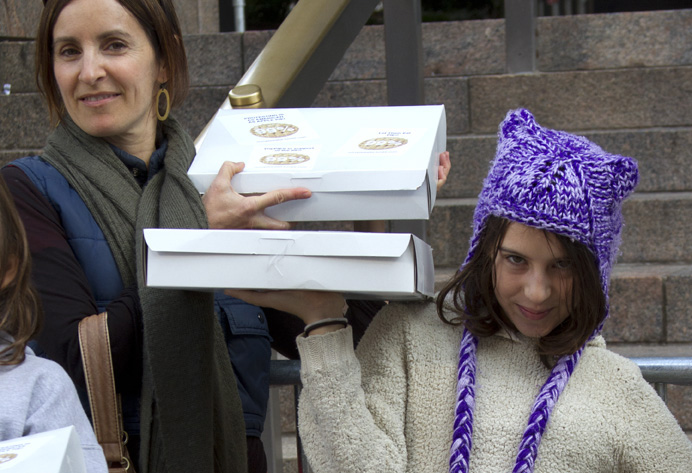
“My dance partner of 10 years (Gabriela Ammann)— she and her husband have property upstate in the Hudson [Valley] New York and she had brought back this huge quantity of apples from the apple trees that grow there. She was trying to think of something to do with them and it was her brainstorm to make all these pies and bring them down to Occupy Wall Street.
We came up with the “Let Them Eat Pie” campaign—the metaphor of the pie, thinking about pie graphs and the 1% versus the many, many other percents—and posted it on Facebook to see if we could get more people to come and help out. It was a small endeavor. I think it wound up being about 15 people involved: there were lots of kids and it got to be about teaching how to make pie crust, doing everything from scratch, using apples that grew on their land.
We spent the whole day baking, and the next day all of us met up and went down to Zuccotti Park and dropped them off…. I think we ended up bringing about 15 pies altogether. The people were so grateful and that felt really wonderful. I’m in my 40s now, and I don’t feel like I can camp out on cold concrete anymore and show up for my life—but I’m very grateful that there are people who are able to do that and I see them as an extension of myself.
I feel very supportive of the people involving themselves in a myriad of ways. I don’t agree with everything that gets said, I really think things get radicalized way too much … but ultimately this is about people in pain. People really are hurting and really want the situation to change. [OWS] was a way to provide a voice, to say something and get out and do something: I really support that action.
I think a visceral experience is always more powerful than a bunch of words being thrown at you…. When I actually went down there and saw people working together, I felt really connected to what was going on–it was very, very moving. And also there were tones of tourists and people who come by and gawk at you all day long, so you’re putting yourself on display. And that I could relate to, being a performer. One thing a lot of people don’t really understand; the people of Occupy Wall Street were making themselves very vulnerable and very accessible in a way that many, many people don’t ever experience. I thought they were very courageous.”
Claude/Claudia Wittmann, 47
Performance artist,
Participated in Occupy Toronto with serial visits and artist actions at St. James Park
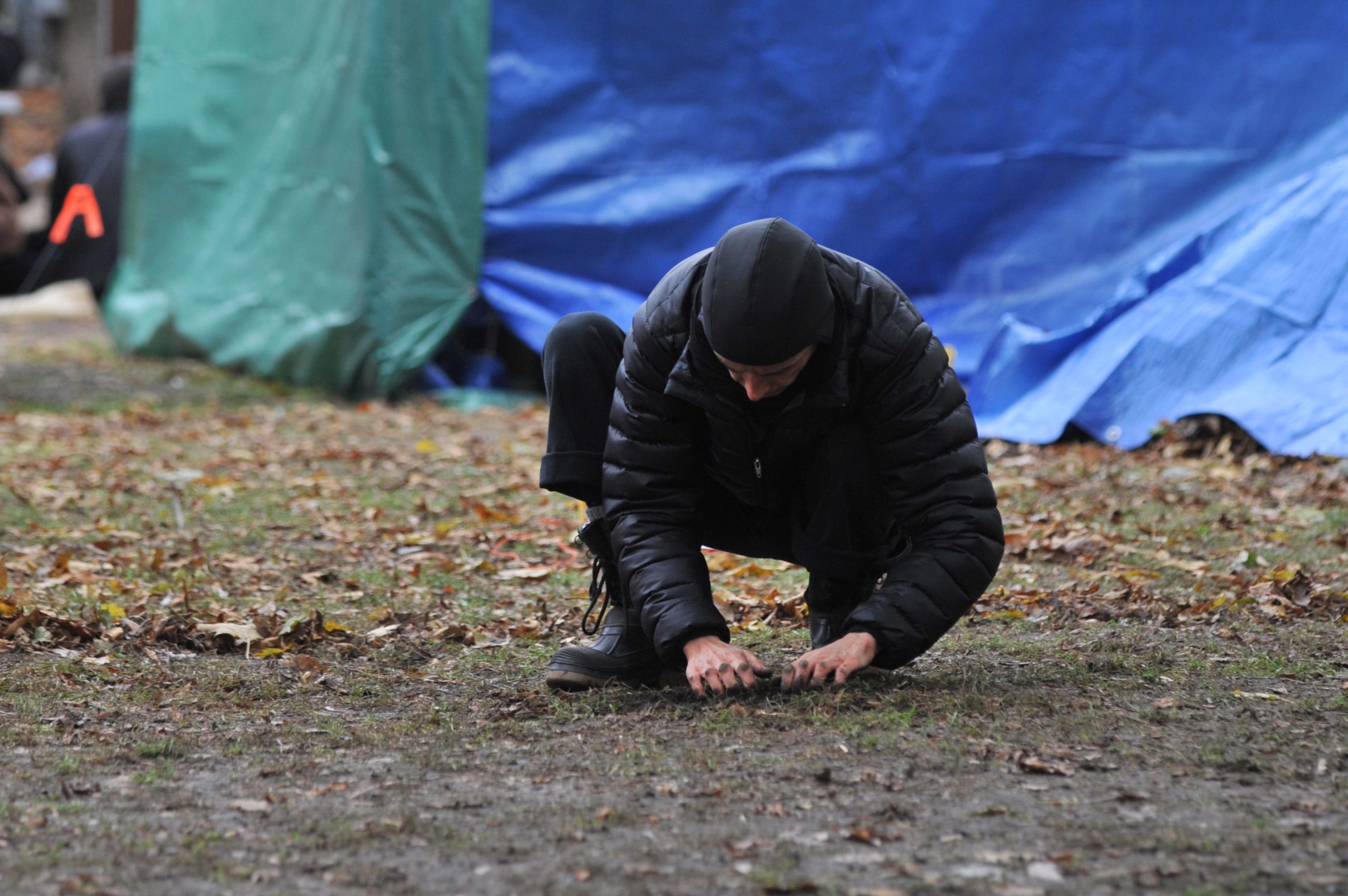
“What I did at Occupy Toronto is more in the realm of performance art. When I look back, I think I was trying to make something visible. You know, one day I just cleaned a little bit of the land, clearing the dry leaves, the wet leaves, and then I started to make a hole there and suddenly I realized I’d created this mini-mound. Just making a tiny bit of that land more visible.
I went there the first time October 25, about ten days after it was set up. I took a black flag and white flag. I had an image of walking around St. James Park with those flags. This action had a meaning for me but when I arrived there the idea just transformed…. I started to look for someone who would walk with me…. The flags were about bringing two colours, with these meanings of anarchy and peace or surrender, and seeing what people would say and how they would react. So trying to make something visible. Even just to one or two people, not necessarily the whole camp.
I was definitely drawn to the politics of the site, the politics on the signs: I identified with that and I learned a lot by going there. I learned that Occupy Toronto was really in process: they were not about a single idea, they were trusting that a process could bring change, instead of only having a single product or a fixed idea that’s published in the newspaper…. Every time I was there I was giving something—like we run around with the flags—little things like that, sparks, moments. But every time I went home, I thought, ‘Oh my god, I received so much.’ It’s almost like going to give and in the end having to accept to receive.
What the people of Occupy Toronto were doing came to me as a magnificent performance, but it was a performance of life. Because they were not in their homes, they were not in a gallery, and they went to the street, they went to their survival needs. So it was a performance about survival: surviving the cold, surviving the need for food, very basic needs.
I work with the body. I believe in the body having very deep and useful knowledge. Occupy Toronto went into its survival needs, which are expressions of this body, what it needs to live. And then there is a more political link that goes back through the G20, because it was through being there and seeing the police brutality, seeing for myself—facing that fucking cop—that I suddenly had this vision that all the knowledge we have in words is absolutely useless. The day you’re facing the power structure, only your body has to be there. I backed down from this cop because I didn’t have the strength to continue with my body and be sure that it would stay safe. So that day my body went into pure anxiety: oh my god, I am responsible for the power or the politics of that man.”
D-Anne Kuby, 51
Dance Artist
Demonstrated and camped at Memorial Park at Occupy Winnipeg
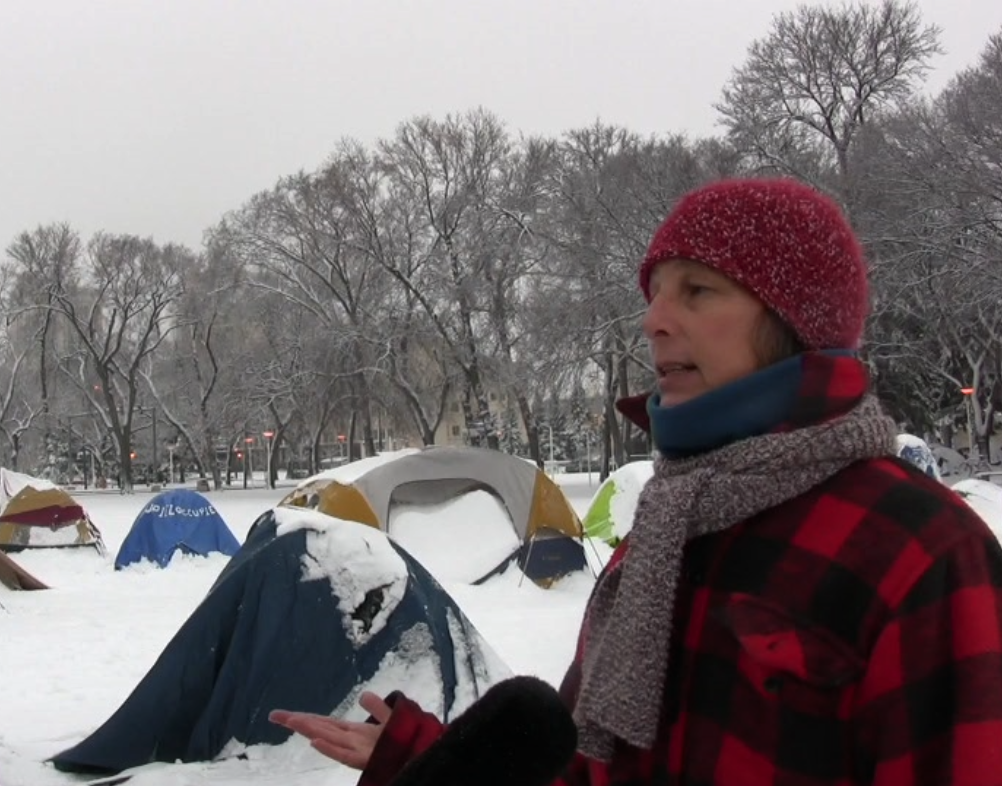
“I went to the October 15 rally with no intention of camping. I was just going to go and show support but half way through the afternoon I realized I needed to go home and get my tent. Listening to all these people express how I’d felt my whole life made me realize that I needed to be with them for a while.
I‘ve always been concerned about the environment, and there was lots of talk about that. And I’ve never really liked money. I’ve always been a person who lived within my means and who doesn’t understand why people feel that they need to have more, and more, and more. And I’ve never understood how it is that we can let people live in abject poverty—it’s beyond me—but I never felt that there was anything I could do about it.
I started out in a tiny tent that I borrowed from my mother. Supposed to be big enough for two but it was shaped such that I couldn’t actually lay flat without both my head and toes touching the tent. A friend eventually lent me a bigger one to sleep in, and I kept the little one to keep stuff in. Both were regular summer tents. When the weather turned, I covered my sleeping tent with tarps and used cardboard and wool blankets for insulation.
We were camped in Memorial Park, which is a park in front of the legislative building. We had—and it varied because people kept coming and going—roughly about forty to fifty tents, so not huge, but for Winnipeg not so bad. We had a kitchen tent and a meeting tent. And we had, for most of the time a sacred fire, a strong symbol for us: it was important to have this fire to gather around and it stayed lit twenty-four hours a day. We had people donating wood, and we had people staying up all night to keep the fire lit and to sort of act as security.
I experienced one of the most amazing thunderstorms of my life while I was out there. It was maybe a couple of weeks in. Late afternoon. The storm came on suddenly. I took cover in my tent. The ground and my being literally shook. The intensity of the storm combined with the surreal nature of my recent Occupy experiences led me to truly believe this could be “it.” I was ready to surrender to the elements and be done. When it finally subsided, I went outside to find that two First Nations women had stayed out the whole time protecting the sacred fire from the rain with umbrellas.
I work part-time, so I would leave the site for several hours in the afternoon. But I was great at washing dishes. That was one of the things I did a lot. There was a lot to do in terms of just getting through the day: getting people fed, keeping things tidy, and we had meetings every day—people would come and give workshops on topics like communism or communication.
We’re talking about camping again in the spring–no final decisions have been made. I don’t know that I’ll camp again but I will be very supportive. I might do something like go every day and help clean up the park. That was my strongest involvement. I was the cleaner-upper and I really liked it.”
Joanabbey Sack, 50ish
Dance Movement Therapist, dancer, dance Educator, drama Therapist
Participated in Occupy Montréal
“My year began by attending an Occupy-organized silent march and vigil–Une marche et une vigile–Une marche et une vigile silencieuse pour accueillir “l’anneé de la prise de a conscience globale”–in downtown Montréal. For this quiet and peaceful event, there was no news coverage. But … the year began with a candle lit moment and an invitation–the opportunity–to state hopes for the coming year. Car horns honked, people waved and toasted with a symbolic clicking of an imagined glass toward the Occupy representatives who again stood in the cold with a statement of hope for this New Year.
My relationship to Occupy was influenced by being hit by a car in late August. I was unable to be physically present at the fall 2011 Occupy events. But I watched with involvement and pride as my son and others worked together during the movement’s initial occupation of Victoria Square and the intense efforts that followed. I was finally able to attend the Victoria Square council gatherings of early December where one could trust (the dance of) this gathering of men and women and children spanning the age range of perhaps five decades.
There were few, if any, news reports of the outdoor and indoor councils of post-physical Occupy. This is where I began to find a role. Knowing of my interest, people from the university arts community, from academic circles and from social contacts asked me about what was happening with Occupy post-eviction. My role has evolved. I write to newspapers and to CBC radio bringing attention to these events and direct people to the web and blog sites informing them of the neighborhood councils meetings in eleven Montreal neighborhoods that emerged out of the December 10th open council in Carré-Victoria, Montréal.
It has become increasingly apparent that there was, and is, not enough information in the public media about the current and continued peaceful, productive and committed efforts of Occupy members. I ask myself, and others, how one brings a peaceful, productive and democratic process to the public eye. Perhaps a dance flash mob? The Occupy councils are definitely a choreography of dialogue and, in my mind’s eye, I see the dance of the Council, its open-mike chorus, the forms and patterns of moving youth, adult and senior bodies in space, and the bodies moving to keep warm.”
Maria Zak, 28
Dancer, social worker, student
Danced with her organization, Belly Dance for Humanity at Occupy Toronto
“I went almost every day—once you are there, it’s pretty obsessive, it’s such a contagious vibe…. Everyone was sharing ideas, sharing information, and what they thought could improve society but not in a negative sense. It was such a positive energy. Like there was this thing called the Huggle: someone shouts, ‘Huggle,” so then everyone would go into this huge hug—there would be like thirty people in a huge hug.
So it was a very positive atmosphere. Everyone was expressing love. Free food for anyone who wanted it. It was inspirational how the site provided for a lot of marginalized communities, providing goods and services, even legal services, for instance, that Toronto is lacking.
I believe the camp started out in solidarity with OWS—we want to show that the world is interested and that we support you guys. Also a lot were feeling that we have to support the [United] States—we’ll be there [in economic trouble] soon ourselves. But the more time we spent there, the more we started talking about local issues: issues about [Toronto mayor] Rob Ford, budget cuts to social programs, and what struck me in particular was the issue around cuts to public libraries. Everyone was talking about that, and they were producing their own little library at Occupy Toronto right in the middle of the camp site. You know, when everyone was being kicked out in the end, a few people chained themselves up to the library to resist. For them, the eviction represents censorship, the books represent knowledge—that some people have, some people don’t have.
Here we are this small camp town that has no money but look at how it’s providing medical services, legal services: all these different services to different communities out of nothing but the government that has so much money is cutting services.
When it came to contributing information, I was more an observer, I was learning from them. And the only think that I felt I could offer was dance: my sister and I have what’s called “Belly Dance for Humanity”—it’s a little campaign we have, so we follow charities and different political events and we use dance to show support. Like for instance, we did a lot of dance for the Japanese Tsunami, but that was actually more raising money through performance. We’ve done dance for “No One is Illegal,” we’ve done a little G20 dancing as well.
It’s kind of just for attention. I mean, a cheesy name for us is “cheerleaders.” That’s pretty much what we are, but it works. We start dancing, and then musicians join, and then a crowd starts building, and then people start asking questions: it’s an awesome opportunity to explain to them why we are at the event. It’s an icebreaker.
The response was amazing. One thing I found very special was the police started recognizing us on the street. Cause we’re twins, so we’re more noticeable. And we had amazing interactions and conversations with the police; they were telling us they supported the Occupy movement and what we are doing is great. Which is unusual because the police are usually known as the oppressor at these events, and a lot of the protesters didn’t like them, but here was a show of solidarity across these lines.
I didn’t camp because of a personal boundary. Some of my clients were in the park, and I felt I had to maintain that boundary. But one thing I noticed, some of my clients would assume leadership roles. And I’m not saying they were organizing something but sometimes if the park was getting too rowdy, for instance, or there were too many of us dancing around, I’d see one of my clients trying to control us—you know, put us back in the park, get us out of the road. Certain leadership roles that they would never get to do, and people listening to them. It must have been such a proud moment for them, it was a proud moment for me watching.”
Andrea Niño, 25
Dancer, teacher, volunteer, part-time caregiver,
member Colectivo Salsa Descalza www.salsadescalza.com
Gave movement workshops, distributed cameras, organized performances at Occupy Montréal
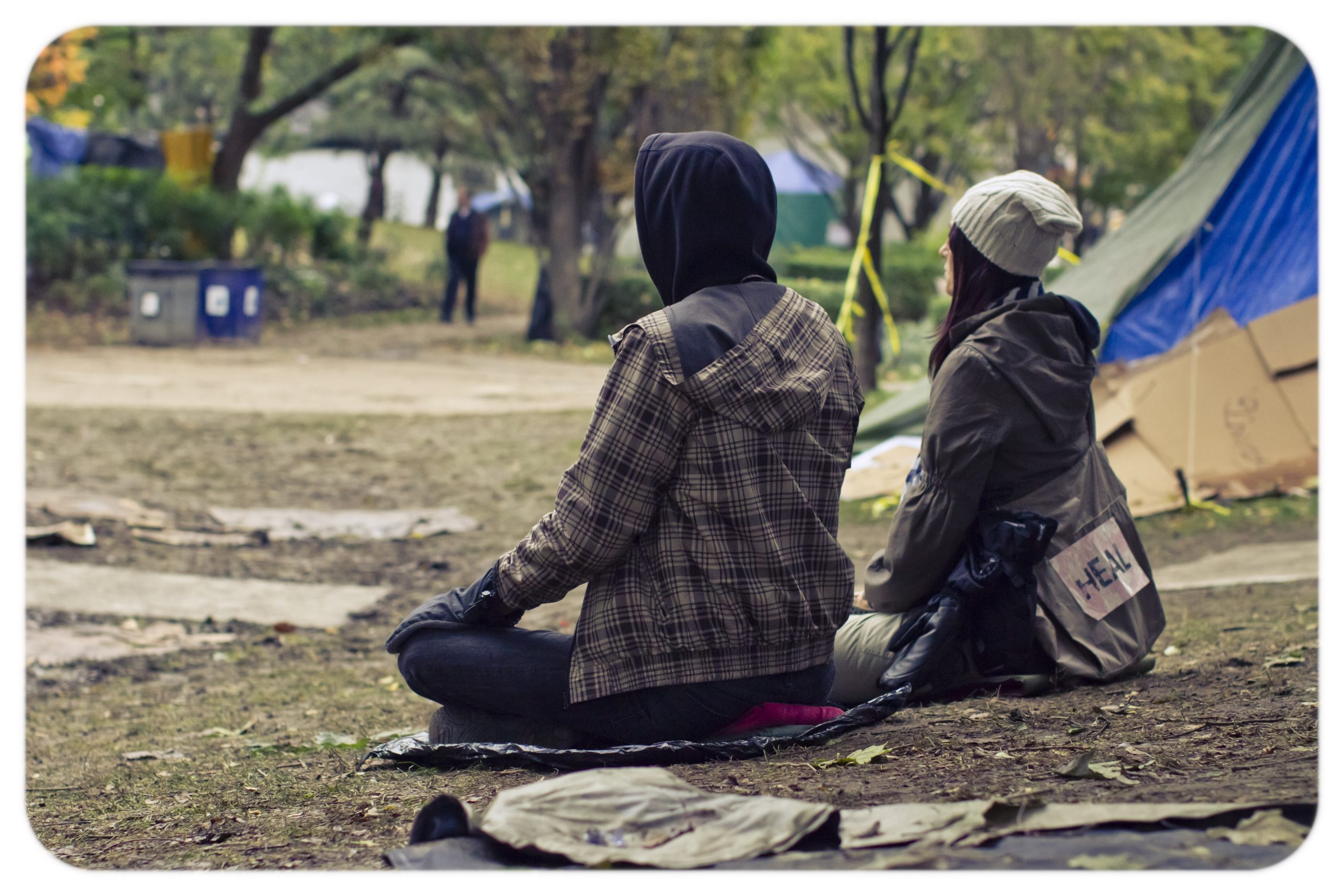
“At the beginning, we organized. We made sure things happened: we brought instruments and cameras. The idea was to give instruments to people to express in another way; and the cameras were to create a documentary of the first day, to ask people just take a camera and take five minutes of what they like.
I never camped out—I’m from Colombia so I’m afraid of the cold. And I work so I cannot spend all my time there. But I worked at the camp with different groups. I’m part of a collective, Salsa Descalza, that was involved and also working with the We Are Thinking hub. Which was not just about occupying, but to think about what we are going to doing next. We organized performances on Sundays, as a way to bring the media—we wanted the camp to have a good image. And we gave movement workshops: teaching some exercises, but it’s more like play and games.
Me, personally, I think it’s important to go out into the street and say as a people, as a society, if we are happy or not. I believe in demonstrating because it’s a way to be together—let’s do something because the system wants us alone, in our houses. Occupy is a way to be together and have a community and to say together what we want to do, what we don’t like, what we’d like to have.
And, Ok, you can go to your local government representative and say what you want but not many do. Because I think that in that environment, in that space, with their rules, you need to obey those rules. It’s not free expression. But the streets are our space. The communal spaces of the city are for us: so how are we going to use them and how are we going to say what we want to do?
I really agree with Occupy—all these things, to resist corrupt banks, to fight poverty, to support the 99 per cent. I really support putting our ideas in the middle of the city, in the middle of the business district, in the middle of where it is all going on. There, it’s all clean, all perfect, there are not that many people on the street. And now all these weird persons arrive and take the square—the square is about beauty but now it’s a different kind of beauty, it’s a different vision. The Occupy people put another reality in front. They said, “Here are people living in other ways:” some don’t have cell phones, some don’t have laptops, some people don’t have money. This is normal, but people don’t always see this reality. I don’t like to go downtown because I don’t feel it’s my home there. We took it back, with tents, with signs, with open stages.”
Cherise Clarke, 36
Stage actor, performer, visual artist
Participated in Occupy Vancouver daily over six weeks at the Vancouver Art Gallery steps
“I came in to Vancouver to work as an actor. I’d actually been staying in my hometown in the Interior but there’s no professional theatre out there. I had two back-to-back gigs out here so I sub-let a place and had some time before my work started. So I went down there on the first day, I had no idea what I was getting into. It was like six weeks of fulltime … madness, in the best sense. In the Dickensian sense—it was really difficult and quite stressful.
There was a lot of sort of theatre going on. As soon as you say “mic check,” and people are repeating back what you say, that in itself is a kind of theatre. Everything for Occupy was very spontaneous, very over-the-top, improvised, very much geared towards being seen and heard on a larger scale and so it was neat to see people pull that out of themselves.
At a certain point we realized that the media was not doing their job—they were misreporting and really biased. You know, I was interviewed by Ian Hanomansing (CBC news) one day—we had had this sacred ceremonial First Nations fire lit on the site, which was in direct conflict with fire code and fire safety and just in general with what’s allowed in this culture. As an acknowledgement of what the word Occupy means in the context of unceded Aboriginal territory, we fought to have this ceremonial fire take place. It was one of our big triumphs for Occupy Vancouver.
The city came in and extinguished the fire. It was quite dramatic. They did it quite violently. There were several of our protesters hurt. Someone had his legs seriously hurt. I was thrown to the ground repeatedly. And Ian Hanomansing had gotten his hands on a piece of information that one of the officers was bitten by a protester. He wanted to know if we were violent. He was such a jerk about it: he wasn’t being unbiased or objective at all. He just wanted us to admit that we responded badly and that we had bitten a police officer. Here we felt that our rights were completely trampled, we were utterly traumatized by this event and he had no interest. He actually asked me at one point: Are you willing to admit that Occupy did anything wrong here? But no, we didn’t do anything wrong at all; we are exercising our right to civil disobedience.
We had a homeless rally that was just massive. We occupied the café of a major developer here in town, there was no media then. When we lit the ceremonial fire, there was no media. When we had a ninety-year-old, multi-war veteran stride into the camp with a written speech saying that he wanted to come down and talk to us because he felt that all the veterans throughout history would be proud of what we were doing—that was on Remembrance Day—there was no media for that. We just got tired of it and decided, Ok, we have to talk back.
I was fascinated by how each Occupy in every city probably had to or organically would form around issues specific to that landscape or community. So I was really glad to see that First Nations issues were first and foremost at this Occupy movement. Poverty, housing, addiction and mental health issues, and Aboriginal issues—these were held at the forefront and I was really proud of us for doing that. One of our biggest clashes with police was in an act of solidarity with local First Nations around the ceremonial fire.
I have Métis ancestry but I wasn’t raised in that culture so I don’t identify necessarily. At Occupy I was serving on the Indigenous Solidarity Committee, and that was a way to on a personal level connect with that history in myself as well.”
Robin C. Whittaker
Director, playwright, author, professor, St. Thomas University
Held a teach-in to support the Occupy movement in Fredericton, NB
‘What does the Occupy Movement look like to the “99%”? What does it sound like? And what narratives can it enable?’
“Last November, in a generator-heated tent, these were the sort of performance questions I asked Frederictonians who had been occupying a small area in front City Hall in what would prove to be Canada’s second-longest sustained occupy action. It seemed to me that one core element of the current protest movement—that of productively sustaining public attention—had waned. I wondered if part of the reason for this was that the occupation—with its painted signs, folk guitars, and other post-sixties trappings—could increasingly be characterized as nostalgia. Protest, I argued, is too easily framed and contained as something the “baby-boomers” did forty years ago, Thus, it struggles to be viewed and heard by much of the “99%” itself (and the media) as forward-thinking. My teach-in, titled “Protest, Performance, and the New” considered how demonstrators perform protest activity to the very public whose approval must be gained in order for the movement to attract attention over long periods of time.
To generate discussion I outlined a series of political performance strategies, from Brecht and Müller to Schechner and Bausch, with emphasis on Augusto Boal’s invisible theatre and, more recently, dissent-based flash mobs. Throughout I warned of “over-familiarity” when it came to the performance of protest. All protest is inherently concerned with performing itself; however, some protest is more attuned to the ways in which it occupies the time, space, and mind of its public and the ways in which it presents itself as “new.” If ritual, as Jan Cohen-Cruz argues, is “a conservative force in culture, providing a structure for people to go through predictable changes” (Radical Street Performance, Routledge 1998), then the very predictability of ritualized protest can disinterest the vast majority of those for whom it is intended. Ironically, the usual trappings of protest come to represent stasis. In a way, I was issuing a challenge.
On the night I spoke, the Occupy Fredericton General Assembly called an emergency meeting. The mayor had issued a formal eviction notice. The stated reason? It was time to erect the annual Christmas tree in the space on which the Occupy tent sat. That dual symbol of Christianity and commercial endurance was the pretense for which the movement’s own endurance would be moved out. It was suggested that in discarding the semi-permanent façade of the generator-heated tent, Occupy Fredericton might take up a performance action that incorporated the tree.
In fact, the tent and the tree shared the city’s property until police forcibly removed the tent at daybreak on January 2. They had held their ground against each other for over a month.”
Tagged: Activism, All, International , National
